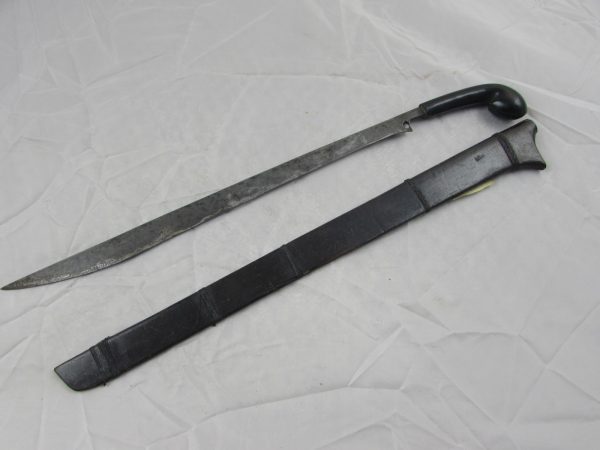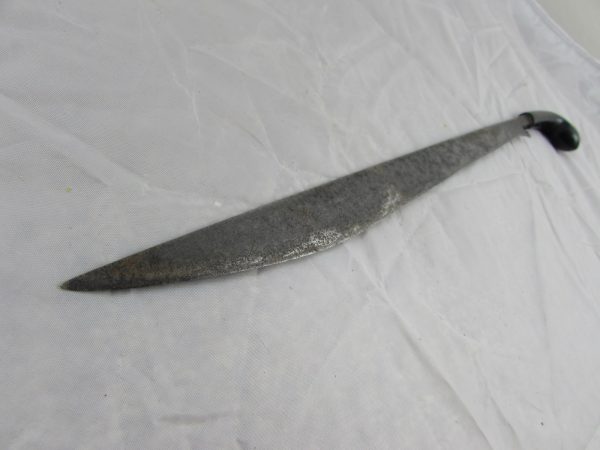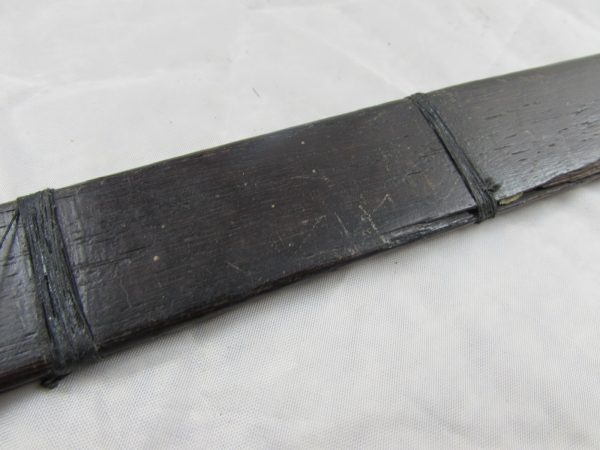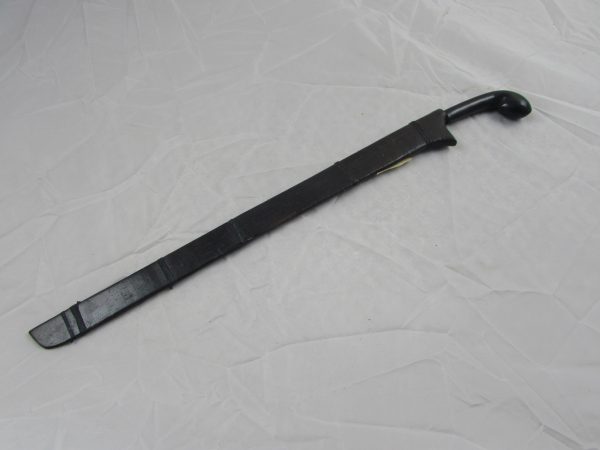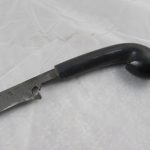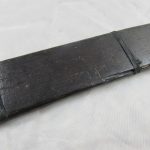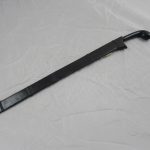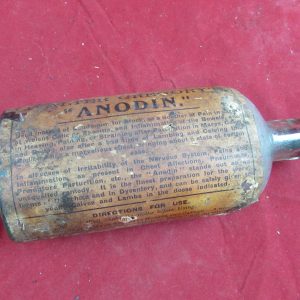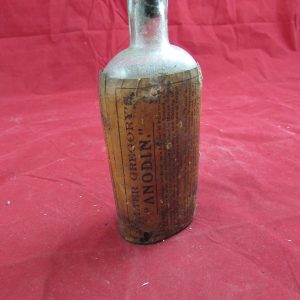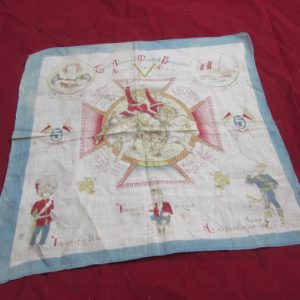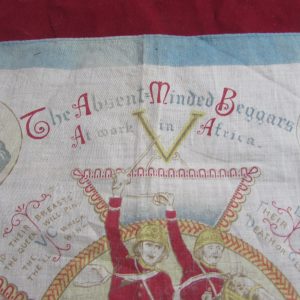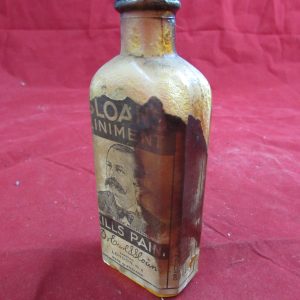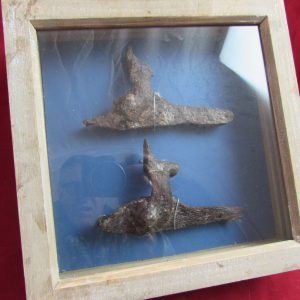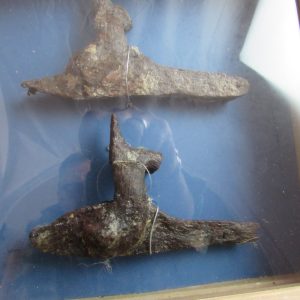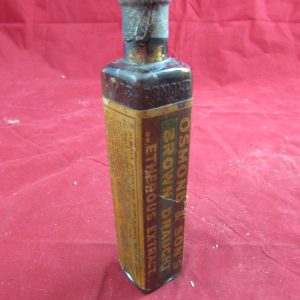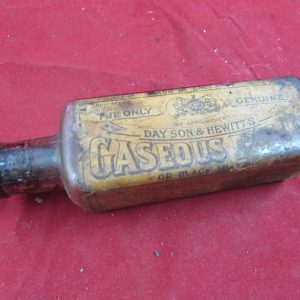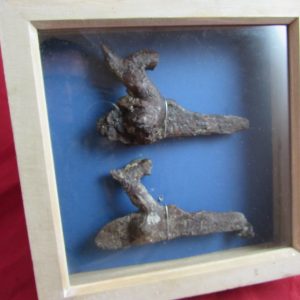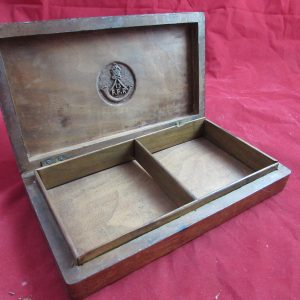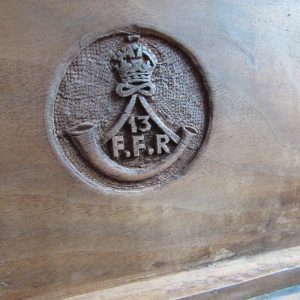Antique Malay Panang Knife
Views: 363
£130.00
Antique Malay Panang Knife
- Description
- Shipping and Delivery
Description
Antique Malay Panang Knife in its original wooden scabbard which is made of two pieces of hardwood tied together with cord. Hardwood grip handle steel blade , no markings on blade which is normal, blade has still got a good edge.
Overall length 19 inches.
These were used as fighting knife’ against the |British and Japanese.
The parang is a type of knife used across the Malay archipelago.[1][2] It is often mistakenly assumed to be a sword; however, there is no evidence that it has ever been used in a formal military conflict, nor that its intended purpose was to be used as a combat weapon. Although some may argue that it could be called a machete or a chopper as it is a direct variation of the modern machete, its academic status remains as a knife.
Typical vegetation in South East Asia is more woody than in South America, and the parang is therefore optimized for a stronger chopping action with a heavier blade and a “sweet spot” further forward of the handle; the blade is also beveled more obtusely to prevent it from binding in the cut. This is the same rationale and (in practical terms) the same design as the Indonesian golok and very similar to the Filipino bolo. The parang blade ranges from 10 to 36 inches (25.4 to 91.44 cm) in length.[1] The parang has a weight of up to 2 lb (0.9 kg) and the edge usually uses a convex grind. The parang has three different edges: the front is very sharp and used for skinning, the middle is wider and used for chopping, and the back end (near the handle) is very fine and used for carving. A parang handle is normally made out of wood or horn, with a wide end to prevent slips in wet conditions. The tang of the parang is usually of hidden tang design, but full tang designs are also available.
Malay Panang Knife
Parang are recorded being used in attacks against the British and Japanese. They are typically carried as weapons by gang members and robbers in Malaysia, Singapore, India, and Sri Lanka, due to these countries having strict gun laws.
Nice condition Malay Panang , in its original wooden scabbard which is made of two pieces of hardwood tied together with cord. The blade is in good order with a hardwood handle, blade has still got a good edge, normal design for these pieces, as in shape. Overall length is 19 inches.
Panang could be classed as a machete but this is actually a knife, these had many uses in the jungle , and were also recorded being used in attacks against the British and the Japanese.
The parang (/ˈpɑːrɑːŋ/; Dusun: dangol) is a type of knife used across the Malay archipelago.[1][2] It is often mistakenly assumed to be a sword; however, there is no evidence that it has ever been used in a formal military conflict, nor that its intended purpose was to be used as a combat weapon. Although some may argue that it could be called a machete or a chopper as it is a direct variation of the modern machete, its academic status remains as a knife.
Design
Typical vegetation in South East Asia is more woody than in South America, and the parang is therefore optimized for a stronger chopping action with a heavier blade and a “sweet spot” further forward of the handle; the blade is also beveled more obtusely to prevent it from binding in the cut. This is the same rationale and (in practical terms) the same design as the Indonesian golok and very similar to the Filipino bolo. The parang blade ranges from 10 to 36 inches (25.4 to 91.44 cm) in length.[1] The parang has a weight of up to 2 lb (0.9 kg) and the edge usually uses a convex grind. The parang has three different edges: the front is very sharp and used for skinning, the middle is wider and used for chopping, and the back end (near the handle) is very fine and used for carving. A parang handle is normally made out of wood or horn, with a wide end to prevent slips in wet conditions. The tang of the parang is usually of hidden tang design, but full tang designs are also available.
Uses
Parang are recorded being used in attacks against the British and Japanese. They are typically carried as weapons by gang members and robbers in Malaysia, Singapore, India, and Sri Lanka, due to these countries having strict gun laws.
Malay Panang Knife
At this time, Antiqurio ships to locations within the United Kingdom mainland. Items can be shipped worldwide by prior agreement please contact us. The risk of loss and title for all items ordered on this website pass to you when the items is delivered to the shipping carrier. We are unable to calculate shipping automatically for multiple items when shipping internationally please contact us by email if you wish to purchase more than one item and live outside of the UK; we are working to resolve this
International
Customs and import duties may be applied to International orders when the shipment reaches its destination. This is not imposed by Antiqurio and these charges are the responsibility of the recipient of your order and are likely to vary from country to country. Contact your local customs office for details.
Shipping laws are different in each country. It is your responsibility to check with your Customs office to verify whether the country to which you are shipping permits the shipment of your products. Antiqurio is not responsible for any direct, indirect, punitive, or consequential damages that arise from improper international shipping practices.
